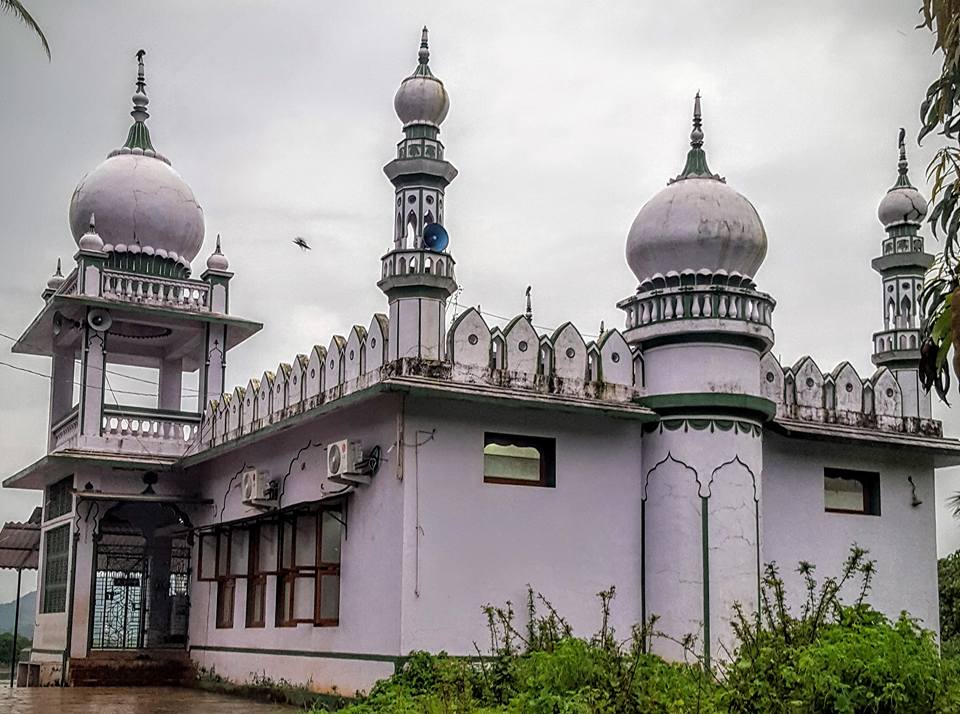www.aljazeerah.info
Opinion Editorials, September, 2016
Archives
Mission & Name
Conflict Terminology
Editorials
Gaza Holocaust
Gulf War
Isdood
Islam
News
News Photos
Opinion Editorials
US Foreign Policy (Dr. El-Najjar's Articles)
www.aljazeerah.info
By M. Burhanuddin Qasmi
Al-Jazeerah, CCUN, September 26, 2016
 |
 |
| Sharie Masjid at Shrivardhan, a township in Raigad district of Konkan region in Maharashtra state of India | student groups from Markazul Ma’arif Education and Research Centre (MMERC), Mumbai, India. |
Islam Reached the Shore of Konkan in 636 CE, During Umar's
Caliphate
One of our student groups from Markazul Ma’arif
Education and Research Centre (MMERC), Mumbai is on a 40-day trip at
Shrivardhan, a township in Raigad district of Konkan region in Maharashtra
state of India. We went to meet them on 3rd day of Eidul Adha (15 Sept.
2016). Shrivardhan is 200 kms. from Mumbai, the capital city of
Maharashtra and the financial capital of India.
Our students, who
are all graduates and in the 22 - 25 age group, enthusiastically informed
me saying, "Sir, there is a masjid named Sharie Masjid, local elders say
it was built during the caliphate of Hazrat Umar (ra) in 15 Hijri i.e.
around 636 CE and they also say there are graves of Sahaba - companions of
Prophet Mohammad (saws) in this township – Shrivardhan!”.
I
replied “Yes, they are right, Islam reached here in 15 Hijri and there
might be graves of Sahaba (ra) in this locality”. I also informed them
that I had done a study in the year 2004 following my visit to one of the
oldest and India's first masjid, the Cheraman Jama Masjid, in Kodungalloor,
Kerala. I visited the area following the historic tsunami in 2004 with
relief goods from Markazul Ma'arif (NGO) and Jamiat Ulama-e Hind.
It was inscribed on the masjid's stone marker, that it was built in the
life time of Prophet Mohammad (saws) in 9 Hijra or 629 CE. That curved
year on the stone marker inside the masjid and its architectural design
made me do a deeper study about the origin of Islam in India, where I
found that Arabs used to frequently visit India through Malabar, Konkan,
present Daman and Diu and Gujarat on the shores of the Arabian sea in the
pre-Islam and post-Islam era, as traders.
They stayed and even did
married with the locals. Some never returned back to Arabia. Some have
their progeny till date in these coastal areas of India.
When the
Arabs embraced Islam, they took their new faith with them to all the
places where they visited for business. Therefore, it is right that Islam
reached India with Malik bin Dinar (ra) in 9 Hijri (628/29 CE) itself via
Malabar Coast. And later gradually Muslim Arabs visited other Indian
coastal areas in succeeding years. Thus Islam reached here by 15 Hijri
year when Hazrat Umar (ra) was the Caliph in Madinah.
Kodungalloor
was the capital of the ancient kings of Kerala and from 622-628 CE (Hijra
2 to 9) the ruler of the realm was a great savant called Cheraman Perumal
Bhaskara Ravi Varma. It is recorded that he accepted Islam and visited
Madinah. On his way back through Yemen his ship sank and he died. This is
one of the major incidents in the early history of Indian Islam.
Following my study in 2004 I have compiled an article "Origin of Muslims
in India" which was published by some newspapers and magazines in India
and abroad. The same can be Googled till date for reference by interested
readers.
So I informed my young scholars that the local scholars
and elders are right. Islam reached the shore of Konkan in the very early
days of this new religion and history records it that there are graves of
Sahaba (ra) in Konkan, say present Shrivardhan, but unfortunately no
historian could say with certainty which grave is of a Sahabi of Prophet
Mohammad (saws) and what's its exact location in Konkan.
I also
expressed my interest and said to them, 'So let's go and visit the
Masjid-e Sharie where locals say there are graves of Sahaba of Prophet of
Islam (saws)”. We walked through the narrow streets from Shrivardhan Jama
Masjid and visited the graveyard in the vicinity of the small but very
prominent Masjid-e Sharie. The masjid is built just on the bank of a small
track on the Arabian Sea. The look and the surrounding scene is of course
magnificent and very cooling for the eyes.
M. Burhanuddin
Qasmi is Editor of Eastern Crescent and Director of Markazul
Ma’arif Education and Research Centre, Mumbai, India.
***
Share the link of this article with your facebook friends
|
|
|
|
||
|
||||||


